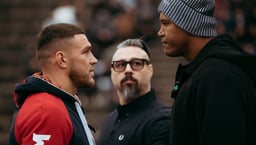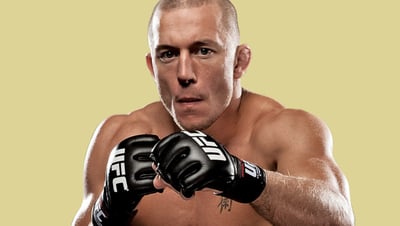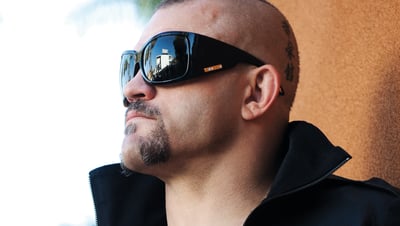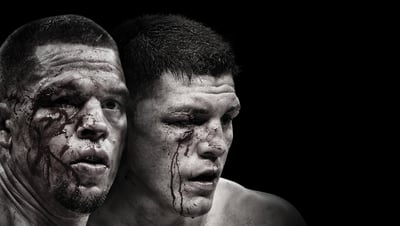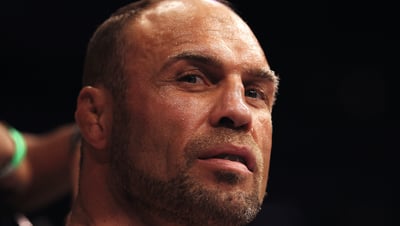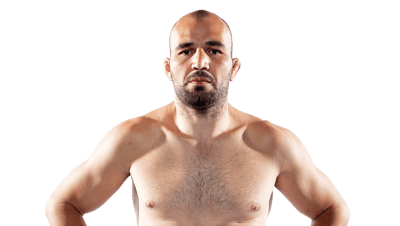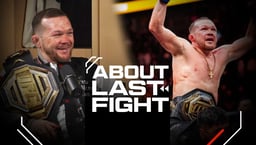
Issue 199
August 2023
There’s a new MMA team being built, with plans to discover and develop the sport’s stars of the future. Fighters Only’s Simon Head went to San Diego to find out more.
Mixed martial arts is generally viewed as an individual sport, but in reality it’s very much a team affair. Every time a pro fighter steps into the cage or the ring to compete, they do so after a training camp spent under the tutelage of coaches, and conducted alongside training partners and teammates. Finding the right team can often be the difference between success and failure in this, the toughest of all sports.
In 2023, the world’s top MMA teams are now becoming almost as famous as some of the athletes they train. And now, in San Diego, California, there’s a new MMA team being built. But this one is a little different.
Run by Cage Warriors president Graham Boylan in partnership with Indonesian streaming platform Mola TV, the MMA Fight Academy is looking to find and develop MMA’s stars of the future.
Boylan has made Cage Warriors a destination promotion for European fighters looking to make the jump to the world stage, and the organization has sent more than 100 fighters to the UFC over the years. Winning a Cage Warriors title is seen as validation that a fighter is ready, or close to being ready, to make the jump to the UFC. Now Boylan is looking to establish a pathway for fighters to get from prospect level to the Cage Warriors level, and then on to the world stage.
Speaking at a press conference in Del Mar, Boylan explained the genesis of the idea.
“The MMA Fight Academy was a an idea put together to help develop professional mixed martial artists who didn't have the means, who didn't have the training facilities, and the guidance, to actually make their way through the MMA space,” he said.
“Being such a young sport, it not fully there yet. We’re 25-year-old sport and the development and pathway for a fighter is still very blurred.”
The MMA Fight Academy’s new pathway started with athlete tryouts, with sessions held in London, Bali and San Diego. From those tryouts, a team of prospects was selected, with athletes from Indonesia, the United Kingdom, and Italy forming the bulk of the group, who were later flown out to San Diego, where they would live, eat and train together as part of a new team.
For the fighters taking part in the tryouts, it looked very similar to the sort of setup that prospects used to undertake ahead of a season of The Ultimate Fighter. But, as Boylan told me when we chatted after the presser, this was far from a TUF copy.
“Over the years, I've been approached to create a documentary to create what was technically the storyline of another The Ultimate Fighter, and for me, I wouldn't touch it,” he explained.
“That’s because you can't compete with that – you can't mimic it, you can't copy it, the budget’s not there, the production’s not there, it's just not doable. So I've turned down so many of those opportunities to get involved in that type of setup.
“I always said that the one thing I would get involved in is creating a team. Because bringing them all in to fight each other, yeah, you're gonna get the drama, you're gonna get the moments. But who's documenting putting 20 strangers together, 20 professional athletes together, in a house, like The Ultimate Fighter, but you’re putting them to live with each other, but they’re not going to fight each other? They're going to sharpen each other, they’re going to make each other better, they’re going to grow together. To put that together was a bit nerve wracking to see how 20 strangers would react.
“From the get-go, we made it perfectly clear, ‘You're not fighting each other. No matter what happens in this production, no matter what happens in this TV show, you are not fighting each other. So go make each other better.’ And they’ve taken that from day one and I could not be more pleased with the success of that whole ethos we’ve embedded into the team.”
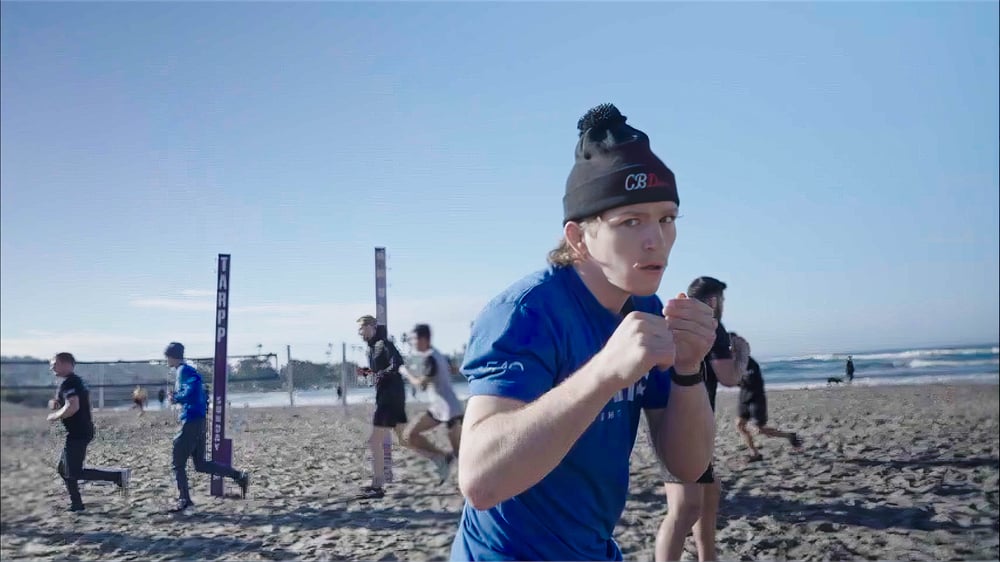
‘If we work together, we’re gonna get to the top’
That collaborative ethos took many of the fighters by surprise when they took part in the tryouts. The English trio of Connor Wilson, Teddy Stringer, and Francis Breen all had a similar mindset heading to the tryouts.
“When I first went to the trials I didn't fully understand what the show was going to be about,” English flyweight Wilson told me.
“I did the trials, and on camera I was saying, ‘Yeah! I’ll fight any of these, no problem!’ I think Graham must have heard me, because he called everyone round and said, ‘I think some of you have the wrong idea about this. We’re building a team.’
“That just makes it that bit easier, as there’s no egos, there’s no trying to beat the other person. It’s there to make each other better, and to all win our fights, you know? Hopefully we can go 20-0 in our fights and all win.”
Breen said the fact people arrived ready to face off against each other just validated their credentials from the very start.
“That just shows how many people are hungry and actually want to do it,” he said.
“Because to put yourself in that environment and sign yourself up for it shows that you're not here to just be a little Instagram fighter. You’re here to actually turn up and fight, and make a living out of it.”
Lightweight prospect Stringer admitted he thought he was entering a TUF-style environment, but has embraced the collaborative ethos of the setup.
“Before we came out here, I thought it was more like The Ultimate Fighter. I was very in the dark before I came out here,” he said.
“Now we've kind of all realized we can all win and be successful together, that changes the dynamic, because you're no longer looking at the guy who's your weight and thinking, are we going to fight? Now we’re thinking, ‘This might just be the best training partner for me.’ It’s someone at the same level, with the same intentions.
“Of course, there’s lightweights here that want to be UFC lightweight champion. So do I. But we can all have our time down the line. There's so many different champions, it shifts, there’s lots of organizations. But I feel like if we work together, we’re gonna get to the top.”
With the tryouts done and 20 fighters selected, they were put up in a San Diego hotel, where they would live and train together every day as they prepared for their next bout.
When Fighters Only arrived in San Diego, the team was eight weeks into their preparations under the tutelage of coaches Marc Fiore and Jake Buracker. Fiore, a former US Olympic wrestling coach, is the former head of The Hit Squad team that helped propel Matt Hughes to the UFC welterweight title, while Buracker, a BJJ black belt under BJ Penn, dovetailed with Fiore to sharpen the prospects’ grappling skills. He said he was impressed with the level of progress he’d seen from his young charges so far.
“They’ve improved across the board, pretty much as a whole,” he said. “Everyone’s going in really confident.”
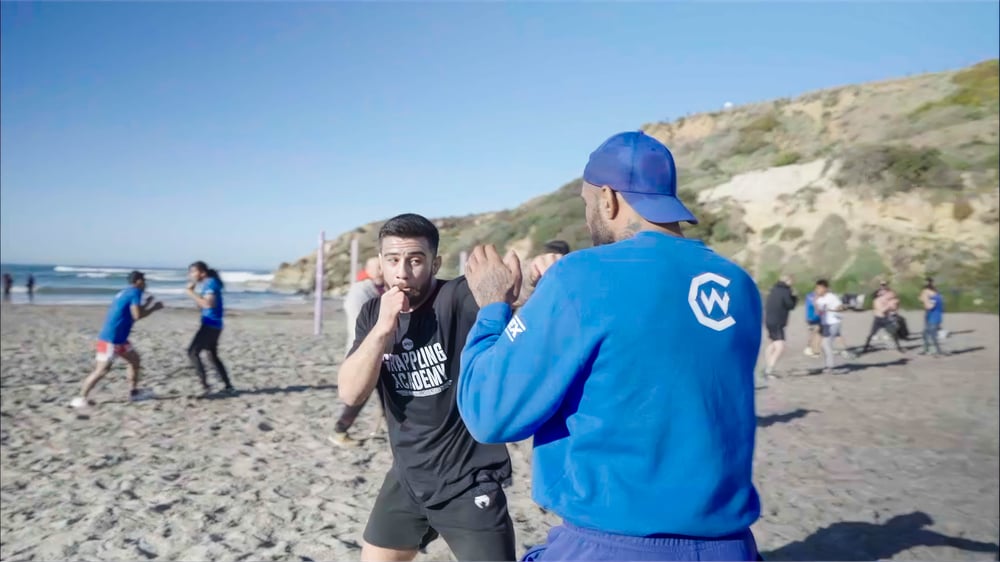
Embracing the grind
Thanks an unseasonal downpour, the planned Thursday early-morning training session on Del Mar beach was scrapped, with coach Fiore instead gathering the fighters outside their hotel and arranging a 45-minute “Grind Session”, which would take place in the hotel’s undercover car park.
“I know this isn’t what you expected to be doing this morning, but you guys all know what I expect from these sessions,” Fiore told his assembled prospects.
“I want you to go hard. Whoever your partner is, I want you to make your partner wish he hadn’t woken up this morning!”
The fighters, accompanied by a roving documentary camera crew from Mola TV, then moved undercover to the hotel car park, where they engaged in a full-intensity session. They pushed each other hard as they worked out with nothing but unforgiving concrete to land on if they fell.
The session was physical and grueling, with no stops for rest. At one point, Fiore – who had also been taking part in the session – walked among the fighters and warned them not to slow down. Other than Fiore’s instructions, and the sound of fighters trying to catch their breath, the session was conducted in virtual silence.
After the session had finished, Stringer, absolutely drenched in sweat, trotted over for a chat and explained that this sort of old-school, high-intensity training was nothing new.
“This is what it’s like all the time,” he said, with a grin.
“They push us like this every day!”
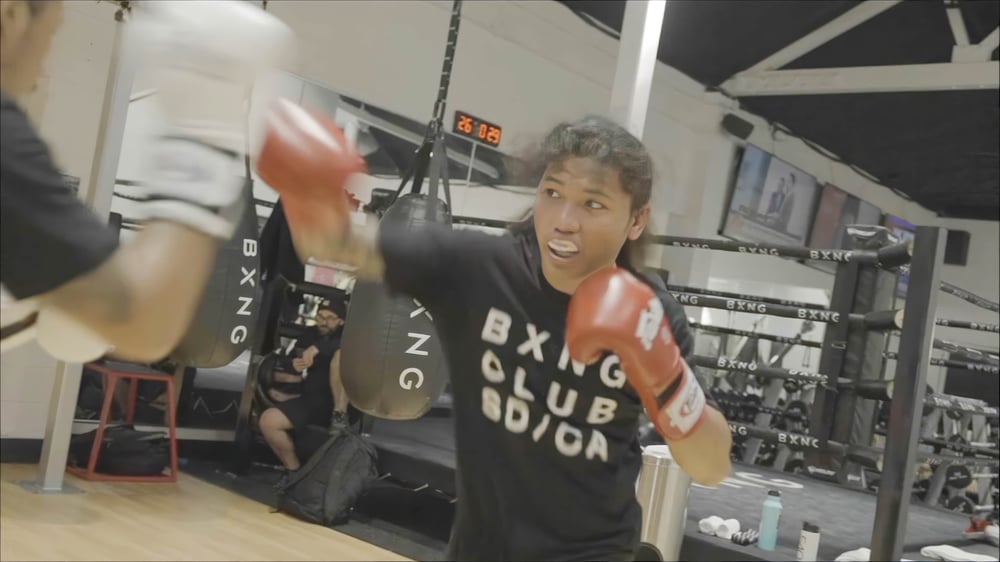
Passion and emotion
The afternoon saw the fighters put through a different sort of test as they took part in a specially-arranged media day and press conference. The session was partly to explain to the assembled media about the MMA Fight Academy project and provide some background information about the venture. But, once Cage Warriors president Boylan and coaches Fiore and Buracker left the top table, it was time for the young fighters to face the questions, and a chance for the media to get to know a little bit about the journeys the 20 prospects had taken to get to San Diego.
Being able to deal with media obligations might not be at the top of any fighter’s list of skills to master, but those who do often find themselves getting a bigger fanbase as a result. In a sport where so many fights are taking place every weekend, being able to put your character across in an authentic way can be priceless for a fighter’s career, especially early on, when prospects look to catch the eye in a bid to earn opportunities further down the line.
The session saw the 20 fighters split into five groups, which each group taking turns to field questions from the media from the UK, Italy, and Indonesia. And, with the team’s ever-present Indonesian translator William Tanujawa working overtime to ensure any language barriers were smoothly negotiated, we got a taste of all 20 fighters’ personalities, and there were a host of real characters among them.
The UK contingent all appeared completely at ease fielding questions and chatting about their hopes and dreams for the future. Lightweight Teddy Stringer was an amateur standout, and is looking to show that Brits can wrestle and grapple, while Next Generation teammates Connor Wilson and Francis Breen are looking to follow in the footsteps of their famed teammates Paddy Pimblett and Molly McCann as they bid to carve their own niche in the sport.
Dagenham’s Jimmy Quinn is no stranger to having to impress on the big stage, but in a very different genre. After watching a Conor McGregor video on Facebook, he gave up a burgeoning career as a dancer with the famed UK collective and winners of 2009’s Britain’s Got Talent, “Diversity” to switch gears and pursue a career in MMA, despite having absolutely no combat sports experience whatsoever. Then there’s Milad Ahady, an Afghanistan-born Englishman who suffered bullying and abuse upon his arrival in the North East of England. But, after immersing himself in the sport of MMA, he built his confidence, found his passion, and is now looking to build a legacy for himself as a professional fighter.
Finally from the UK-based group, there’s Marin Vetrila. Moldovan-born, but now based out of Northampton, England, his route into combat sports was a pretty painful one, as he shared a story of competing in a fight on short notice, despite having two broken hands. Some of the production staff pointed him out to me during the car-park training session earlier in the day, and suggested he could be one of the fighters that makes a real mark as his career develops.
The Italian quartet of Khadim Dia, Luca Borando, Edoardo Caiazza and Francesco Mazzeo all answered questions in both Italian and English as they shared their stories. Caiazza and Mazzeo both had particularly striking tales to tell.
Middleweight Mazzeo was the biggest fighter in the entire group, and the softly-spoken Milan native told us how losing his father and being abused by his drug-addicted and violent “devil” of a stepfather means he’ll never carry fear into the cage with him. “MMA hits hard, but real life hits harder,” he told us.
His lightweight compatriot Caiazza revealed how he had a different challenge to overcome. He suffered a brain haemorrhage that put his hopes and dreams of an MMA career on hold for four long years. Now 25 years of age and finally cleared to compete again, he’s determined to take his chance with both hands.
The sizeable Indonesian contingent came with plenty of personality, despite the questions and answers having to be diverted via the tireless translator William – one of the stars of the week in San Diego. Whether it was Cornellius Aritonang sending his teammates into hysterics by branding coach Fiore a “cheat” and accusing him of pulling his hair during the training session that day, or Windri Patilima revealing his child’s middle name is “Cormier” as a result of his love for the former two-division UFC champion, the Indonesian fighters brought plenty of smiles.
I asked them about their sporting heroes and got a range of responses, from Cormier to Bruce Lee to Israel Adesanya. But perhaps the best response came from Eperaim Ginting, who thought for a moment, then told us that he doesn’t really have a hero, but instead, that he wants to become a hero himself so he can inspire the next generation of Indonesian fighters. The sport is hugely popular in Indonesia, and Ginting and his fellow teammates want to eventually become standard bearers for Indonesia on the global stage.
There’s also a proud representative of Tajikistan in the team. Jovidon Khojaev trained out of Ho Chi Minh, Vietnam, but earned a spot in San Diego after impressing at the Bali trials. Now he’s determined to fly the flag for his country, and, after checking with Boylan that he was allowed to swear on camera, he gave us the first piece of trash talk of the day, as he sent a message to his upcoming opponent as “The Persian Lion” roared, “Let’s go, motherf****r!”
When you sit there and listen to their stories, it’s hard not to root for them to succeed. Every fighter, in every promotion, brings with them their own unique story. But, in a world where fights and events come and go so quickly and the news cycle turns so fast, it can sometimes be difficult to slow things down and delve into a fighter’s personal journey, and their stories can often go unnoticed until a fighter makes it to the big stage.
So, to hear these fighters share their unique stories so early in their respective careers was a real privilege. Some will go far, while others may fall away. But sitting and hearing the stories was a welcome reminder to everyone on the media side of the fence that this sport is so much more than red corner vs. blue corner.
Aside from their individual stories, the other thing that really came across was the brotherhood that had clearly been built over the course of their eight weeks living and training together. Unlike The Ultimate Fighter, where rival fighters live and train together in the knowledge that they will eventually have to face off in the Octagon, these fighters were told right from the outset that they would not be fighting each other, and that their job was to train hard, get better and help their teammates do the same. Clearly, it built a real connection across nationalities and languages, with a grinning Stringer getting a big cheer from his Indonesian teammates for introducing himself, in Indonesian.

Developing MMA’s top ‘draft picks’
With the fighters developing their skills on the mat, in the cage and even on the mic, they’re being prepared for life on the professional stage where, if their talent continues to flourish, it’s hoped that some of them will make it all the way to the world stage.
It’s a developmental program Boylan equates to a Premier League club academy, or a system that produces the best up-and-coming prospects for the big leagues to select, similar to how the NFL’s teams select the top collegiate prospects at their annual draft.
“You take a Premier League football team. They’ve got academies, just signing, looking after, and developing guys from 15, 16 years old. So, for us, we’re looking at the sport in a way that there’s no development there for these guys. There’s no pathway as such for these guys,” Boylan explained.
“For guys who are 6-0 or 7-0, there’s a pathway. They can go to Cage Warriors, they can get three or four wins, they can get the belt. That’s (like) the (NFL) draft. They’re the number-one pick in the draft at that point. As far as I’m concerned, if you have the Cage Warriors belt, you are the number-one draft pick in that division. The other guys, what do they do? How do they get to it? That was the conundrum I was looking at.
“Take Jimmy Quinn, for example. A professional dancer with ‘Diversity.’ Switched, flipped, ‘I want to be a fighter.’ What does he do? Where does he go? Boom. MMA Fight Academy. That ecosystem is going to develop. We’re going into season one, two, three, and pick up the best guys. The winners of their fights will going into a kind of super-team that we’re creating. And when you put the best fighters together, they're just going to make each other sharper, and they're going to make each other better.
“So I think the long-term aim is we're going to have a super-team of guys who are going to be world champions, who's going to be a team where people want to go and train. And the side product of that is we’re developing the sport. We’re creating athletes who the sport is going to wake up to.”
For the fighters themselves, making the training camp in San Diego is only the start. After eight to 12 weeks of intense training, they’ll pull on the gloves and step into the cage for the biggest fights of their lives.
For five members of the Indonesian contingent, that’ll mean a trip to Shanghai, China for Road to UFC 2, where they have the chance to impress the UFC brass and, potentially, follow in the footsteps of Jeka Saragih, who became the first Indonesian fighter to fight in the UFC after impressing with back-to-back knockout victories to reach the lightweight final of the inaugural Road to UFC tournament.
The Italian quartet will head a group set to compete at Cage Warriors 154 in Rome, where Mazzeo, Dia, Caizza and Borando will get the chance to compete on home soil, while the UK-based fighters will remain in San Diego for Cage Warriors 155 on June 2, where they’ll look to impress in what’s become their second home.

The end of a dream
The big event of the week was the combat sparring session held at coach Bulacker’s Solana Beach gym, Studio 540 Jiu-Jitsu. The fighters were matched up and sparred hard for three five-minute rounds before switching up partners and returning to the mat in the second half of the session for another hard three rounds as the fighters simulated the heat of battle on fight night.
Before they got underway, Boylan gathered them all on the mat and told them to keep the intensity high, and to push each other as close to fight intensity as possible, while trying to avoid injuring each other. It’s a difficult balance to strike, especially with a room of fighters with very different backgrounds and varying levels of pro-sparring experience. The action at points was as intense as you’d see at a professional fight night, but live sparring isn’t without its dangers and, sadly for one fighter, the session didn’t pass without incident.
Indonesian prospect Reza Arianto got taken by surprise by a spinning hook kick from Tajikistan fighter Jovidon Khojaev during the session and was knocked out cold. The session stopped immediately as some fighters moved quickly to help Arianto recover, while others went to console a distraught Khojaev, who swiftly realized the consequences for his teammate of being knocked unconscious.
“It was a freak accident that happened,” Boylan explained.
“Reza took a kick to the head. He was out cold. He was stiff, and it it was more than six seconds. When something like that happens, (it’s a) mandatory 45-days (with) no contact.”
It meant that Arianto, who was due to compete on Road to UFC 2 in Shanghai, China on May 27, would have to be pulled from the event. The biggest opportunity of his career, and the fight he had been preparing for over the past eight weeks, had evaporated with one stray kick to the head.
“It absolutely breaks my heart to have these conversations,” said Boylan.
“It’s tough, knowing how much work they’ve put in.”
Boylan and coaches Fiore and Buracker later had to explain the consequences of that knockout to a crestfallen Arianto.
“Because you’ve been knocked out unconscious, we can’t let you fight. We can’t. We have to pull you from the fight for your own safety,” said Boylan.
“Listen, we have to protect you. We have to protect your safety.”
The session was eventually restarted, and Stringer was thrown in to replace Arianto against Khojaev, with the Brit given one clear instruction by coach Buracker, “Grapple!” Stringer did just that and within a couple of minutes showed his mat skills as he turned a Khojaev takedown into a sweep, a back-take and an impressive rear-naked choke to force the tap.
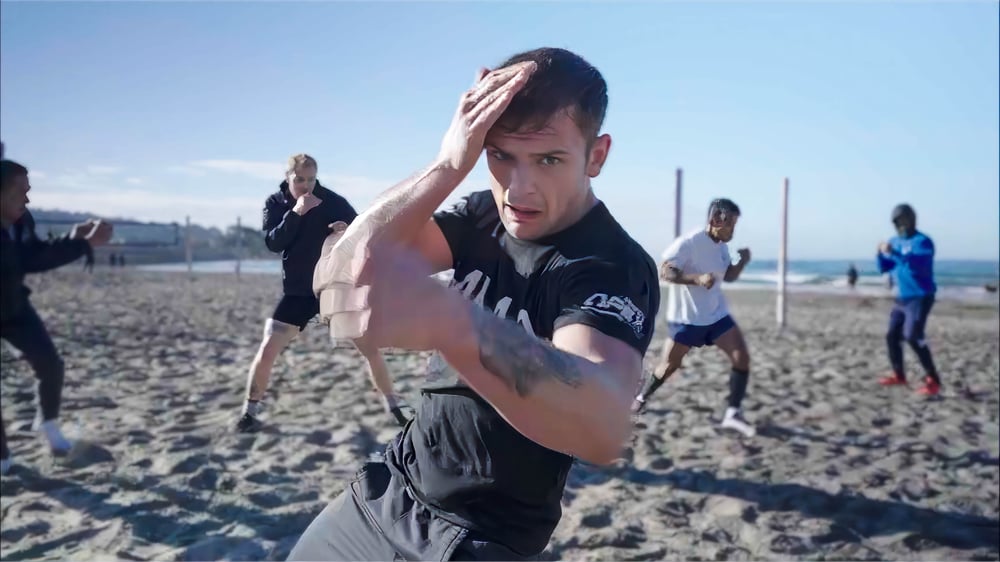
‘The guys are killers… there will be some good names coming from here’
Elsewhere, English flyweight Connor Wilson was drafted in to spar welterweight Windri Patilima, and produced the most impressive performance of the session. Patilima is 8-0 as a pro welterweight, with seven finishes to his name, but Wilson pushed a relentless pace on his bigger, heavier teammate, despite receiving two accidental, but solid, kicks to the groin in the same round.
“That’s just my style. That’s how I fight. I’m just an aggressive little f****r!” he told me with a grin after the session.
While Wilson was pushing Patilima out of his comfort zone, Francis Breen, a teammate of Wilson’s at Next Generation gym in Liverpool, was shouting tips and encouragement. But they weren’t aimed at his fellow Scouser. Instead, he was trying to help Patilima. It showed the team mentality of the entire group, with the whole team, regardless of where they came from, all encouraging each other to raise their game and improve.
Also taking part in the session was former Cage Warriors featherweight champion Morgan Charriere, who didn’t hold back in his sessions with Milan Ahady and Luca Bofando. But, despite making life difficult for both prospects, Charriere took the time immediately after each session to talk the two up-and-comers though the session, explaining where they did well, where he was able to exploit their styles, and gave specific tips on how to tighten their technique. It was also valuable mat time for Charriere, too, as he told me when we chatted after his session with Ahadi.
“The guys are killers, they push me every time,” he said.
“They aren’t going easy on me, they’re really trying to f**k me up! They don’t respect me, so I have to stay focused and play my A-game every time, so I’m getting better, and they’re getting better.
“Each time, after the sparring, I tell them what was good, what wasn’t … so as time is going on they’re getting better with me, and I need to get better to keep my level above them, so it pushes us all to be better guys.
“They are really good. There will be some good names coming from here.”
That seal of approval from one of Cage Warriors’ top fighters shows that the fighters picked to take part have the right attitude as they look to make the jump to the next level.

Taking the next step
Up next, the fighters will step into the cage to compete in a bid to add a win to their professional records, and to impress Boylan, Fiore and Buracker. Those whose performances impress the coaching team will be invited back to form a new super-team that will continue on as the MMA Fight Academy.
Those that don’t quite make the grade will return to the local scene to continue developing and sharpening their skills. The plan will eventually be to bring in a new batch of prospects to train alongside the newly-established team in the second season of the documentary.
“We have 20 of them training two-three times a day, five days a week. Some of them are going to get there, some are not – we have to be real about this,” said Boylan.
“But we’re confident that we’re gonna have a couple of world champions here, whether it’s on Cage Warriors, or whether they go on to bigger things after that. But we’re definitely confident we’re gonna have a couple of Cage Warriors world champions here.”
...

